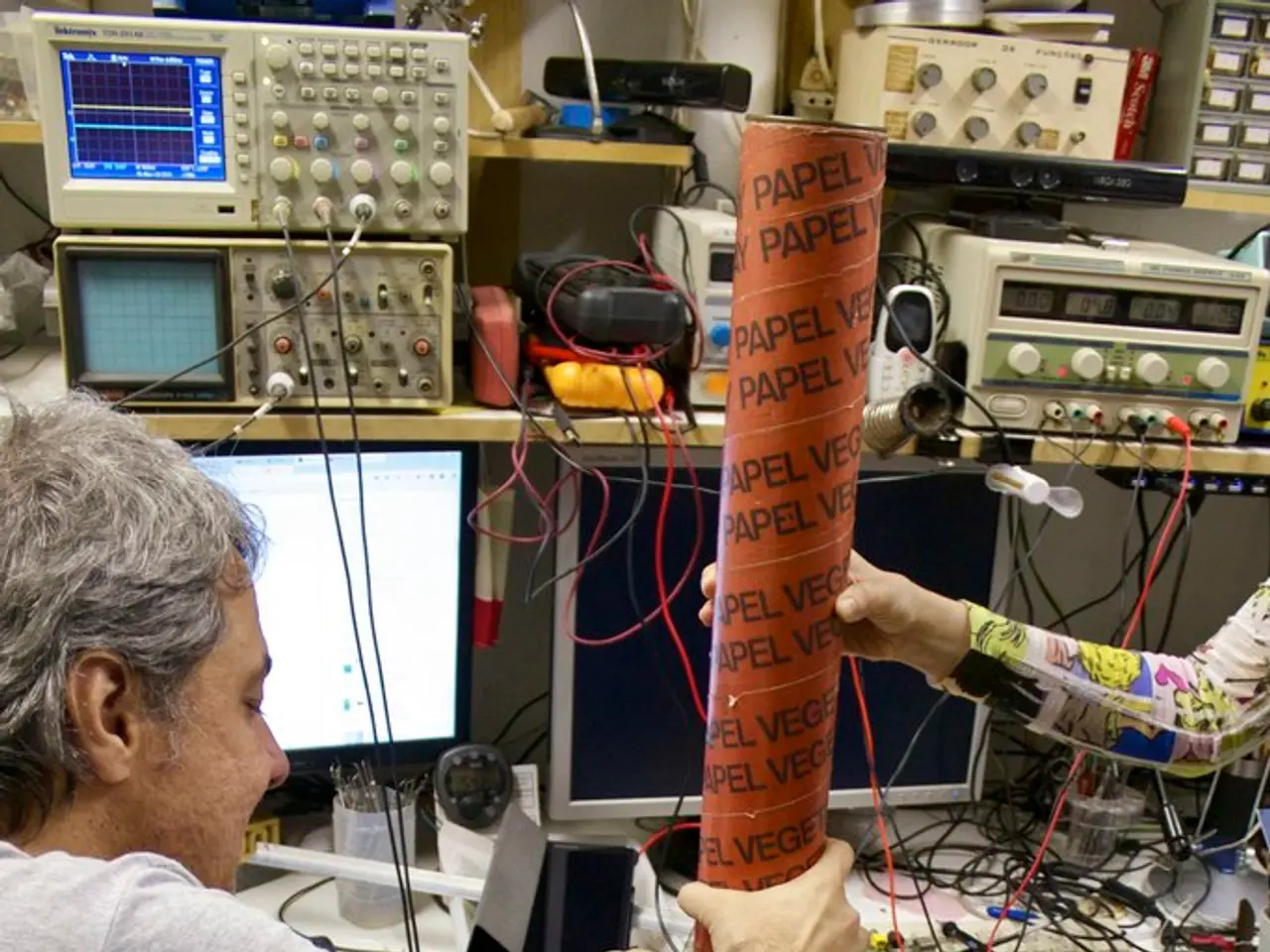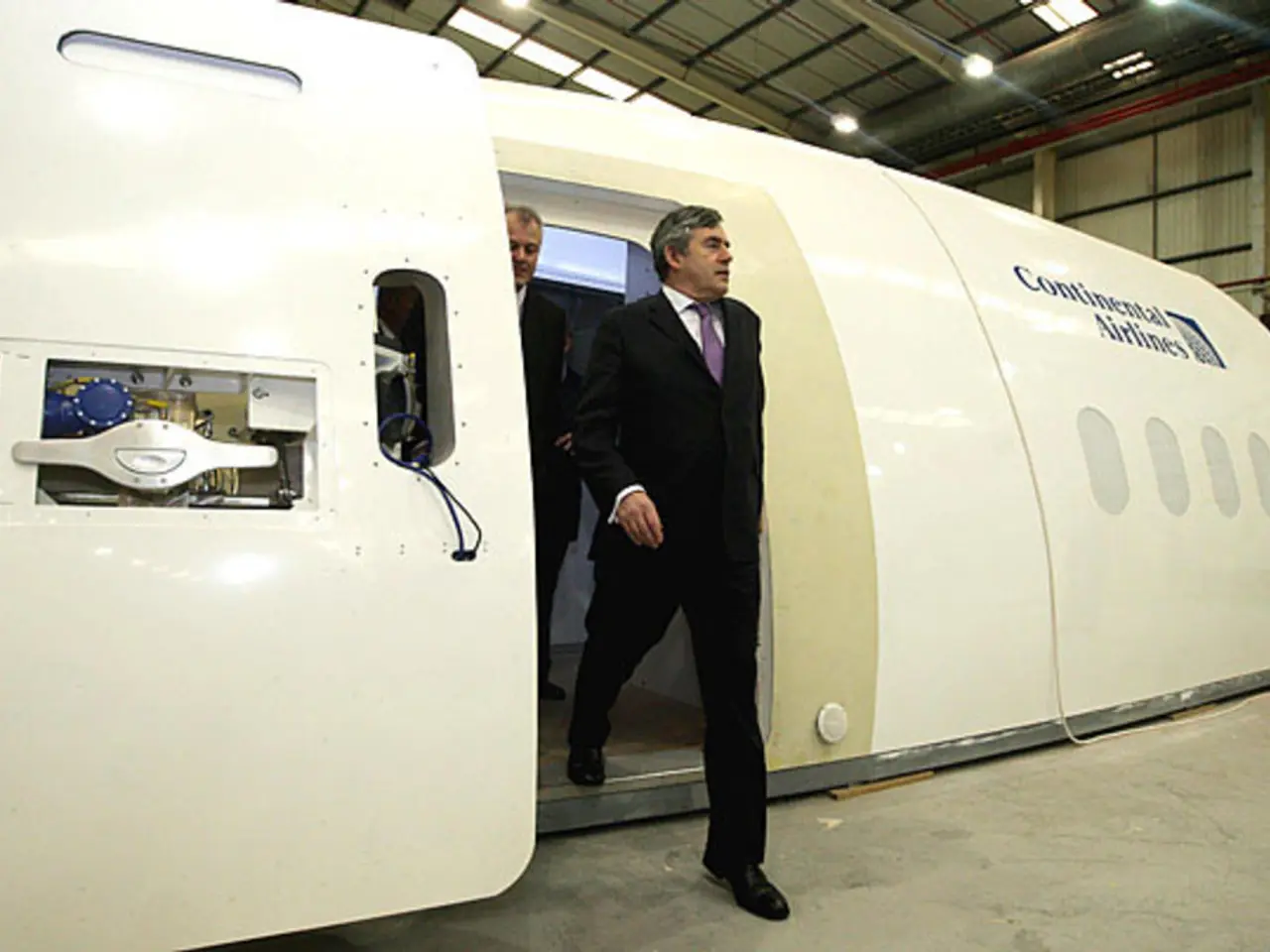Investigating the Relationship Between Technological Advancements and Occupational Safety
In today's rapidly evolving industrial landscape, digital tools are transforming safety practices across various sectors. These advanced systems, integrating AI, machine learning, and smart sensors, are proving instrumental in identifying risks faster than traditional methods, from detecting early signs of machine stress to predicting potential security breaches.
However, these digital tools are not a silver bullet. When sensors malfunction unexpectedly, they may give a false sense of safety, exposing workers to undetected hazards. In such cases, emergency protocols that guide responses to sensor failures using manual checks and human judgment become crucial.
Employees play a pivotal role in ensuring the effective use of these digital tools. Continuous learning is essential for workers to use advanced safety tools effectively, including digital platforms, wearable devices, and data dashboards. Moreover, employees must feel confident in suggesting improvements to existing technologies and routines, combining digital training with on-the-ground safety procedures and drills.
Digital systems also collect valuable data to improve workplace design and hazard planning. For instance, a recent study by ScienceDirect highlights the use of low-cost sensors to monitor air quality in factories, connecting to IoT systems for real-time environmental data.
Autonomous machines using AI and sensors are transforming hazardous waste cleanup and disaster response, managing everything from oil spills to unstable soil without putting humans at risk. These digital tools help prevent fatigue, chemical exposure, and sudden equipment failure, and they allow faster emergency response when conditions start to deteriorate.
Yet, human oversight remains essential for validating AI predictions and decisions, ensuring workers understand how AI arrives at conclusions. This oversight is crucial in ensuring safety, and ethical frameworks require that human operators stay responsible for outcomes that directly impact workers and their well-being.
The deployment of these robots without defined accountability creates confusion when failures occur. Autonomous decisions must be transparent, traceable, and reviewed after incidents. Backup systems and analog tools are essential when digital monitoring becomes unreliable or suddenly stops working.
Modern digital tools are changing safety practices, but they must balance risk prevention with respect for personal boundaries. For instance, wearable devices track posture, stress, and movement in real-time, while smart sensors monitor air quality and temperature changes on factory floors. However, constant tracking raises important privacy and transparency questions, and workers should know how their data is used and protected daily.
In conclusion, contemporary digital monitoring and automation tools combine advanced AI-driven capabilities with rigorous privacy protections, ethical governance, and accountability frameworks to effectively manage legacy material hazards while safeguarding employee rights and organisational integrity. This balance of innovation and responsibility is critical as workplaces increasingly rely on digital oversight and automation.
However, it's important to note that harmful materials such as asbestos and silica remain in use in factories and emergency services, posing threats even when alerts are issued. Replacing dangerous legacy materials is another important step to protect workers and ensure safety, particularly in the use of asbestos and silica in factories and emergency services.
3D printing enables safe custom parts that substitute high-risk materials used in outdated systems, reducing exposure to toxic chemicals and improving equipment safety and sustainability. The American Machinist states that continuous learning is essential in manufacturing as technology rapidly changes job skill requirements.
Unchecked algorithmic bias can lead to inaccurate safety alerts and expose workers to avoidable dangers. Therefore, it's essential to address and mitigate algorithmic bias in digital safety systems to ensure they are fair and effective in protecting workers. A culture that encourages communication and feedback, where workers feel empowered to suggest improvements, is key to maintaining a safe and efficient workplace.
- In the realm of educational advancement, it's crucial for employees to received digital training, enhancing their ability to effectively utilize advanced safety tools such as digital platforms, wearable devices, and data dashboards in their careers.
- Collaboration between AI and technology in areas like environmental monitoring can lead to innovative solutions, such as the use of low-cost sensors to track air quality in factories, which then connect to IoT systems for real-time data.
- The integration of technology in industries like hazardous waste cleanup and disaster response has transformative potential, allowing autonomous machines to manage hazards without putting humans at risk, thereby reducing exposure to fatigue, chemical exposure, and sudden equipment failure.
- While digital tools can provide valuable insights and predictions, human oversight is still essential to validate AI decisions and ensure safety, especially concerning ethical implications that may directly impact workers and their well-being.
- As we continue to integrate technology in workplaces, it's vital to address concerns regarding privacy and transparency, ensuring that constant tracking of employees through wearable devices or smart sensors does not infringe upon personal boundaries.




